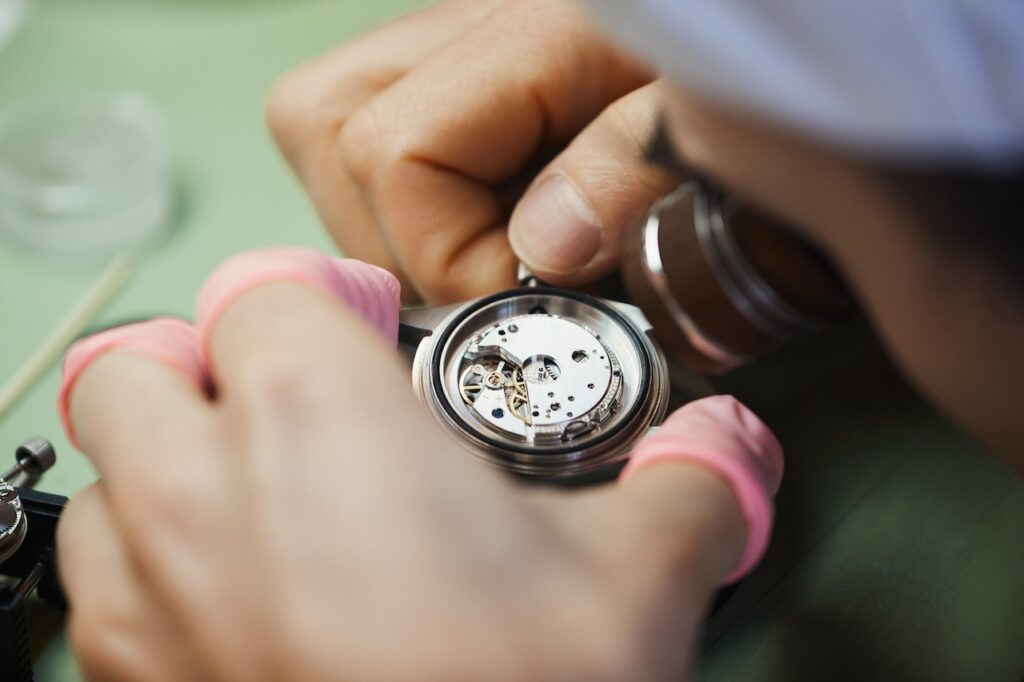Watches, beyond their utilitarian function, hold a unique place in our lives. They are often passed down through generations, gifted on monumental occasions, and adored for their aesthetic and intrinsic value. Thus, it’s understandable that when a timepiece requires repair, it can become a matter of sentimental importance as much as practical necessity.
But what really happens during a professional watch repair? And when do you know when it’s time to take your watch in for maintenance? Today, we’ll delve into the details of watch repair and what a professional can do to restore your beloved timepiece.
Signs That Your Watch Needs Repair
Watches, like most mechanical devices, require some level of maintenance to keep running smoothly over the years. There are numerous tell-tale signs that it’s time to skip a DIY solution and seek a professional’s help for watch repair:
- The 5-Year Rule: Manufacturers often recommend servicing your watch every five years, much like a routine check-up for your car. This ensures that pesky oil hasn’t dried up, no part has seized, and everything is ticking as it should.
- Moisture Concerns: If you notice condensation or moisture inside your watch, consider this an SOS signal. Seals may have deteriorated, letting in water, which could be the precursor to major damage.
- The Swing Test: If your wristwatch sounds like maracas or feels loose when shaken, chances are something has come unscrewed or off inside. Gravity is tricky, and so are the tiny parts inside your watch.
- Timing Isn’t Right: Quite literally! If your watch is telling the wrong time, the timepiece’s primary function isn’t to par—your watch may be running too fast, too slow, or just about as reliable as a sundial in a storm.
The Professional Repair Process Unpacked
If your timepiece falls victim to any of the symptoms above—or sometimes even if it doesn’t—it might benefit from a meticulous watch repair process in the hands of a professional. Here’s a step-by-step look at what that might entail:
- Disassembly: The process begins with the watch being taken ‘apart,’ a delicate process that necessitates precision to prevent any damage to the parts.
- Inspection: Each component is examined under magnification to ascertain the wear and tear and identify what needs fixing. This can reveal issues undetectable by the naked eye.
- Replacement: Any old, worn, or damaged parts are replaced with new ones. This could range from something as small as a spring to a major component such as the mainspring or balance wheel.
- Cleaning: Parts are cleaned meticulously, removing dirt, dust, and old oils. Ultrasonics and other advanced cleaning processes may be employed to ensure a thorough cleanse.
- Oiling: The cleaned parts are now oiled, but not the way one might expect. A single drop could be too much or too little, and the strategic placement of oil is crucial for longevity.
- Polishing: For watches with an aesthetic element, such as gold bezels or ornate designs, polishing may be part of the process to restore the watch’s outward beauty.
- Reassembly: Each part is put back with the same dexterity and care in the reverse order of disassembly, and the watch repair process is complete.
The Jewelry Artisans’ Difference
At Jewelry Artisans, we believe in the craft of watch repair. Each piece that comes through our doors is treated with the utmost care and the meticulousness it demands. We’re dedicated to preserving not just the function but the history and heart of your timepiece.
If your watch is overdue for maintenance or has encountered a mishap, bring it to Jewelry Artisans for an evaluation—we’ll provide you with expert advice and transparent pricing options before any work begins. With over 45 years of experience, we have the knowledge and skill to restore your watch to its former glory. Contact us today to let us restore your timepiece to its full potential.





